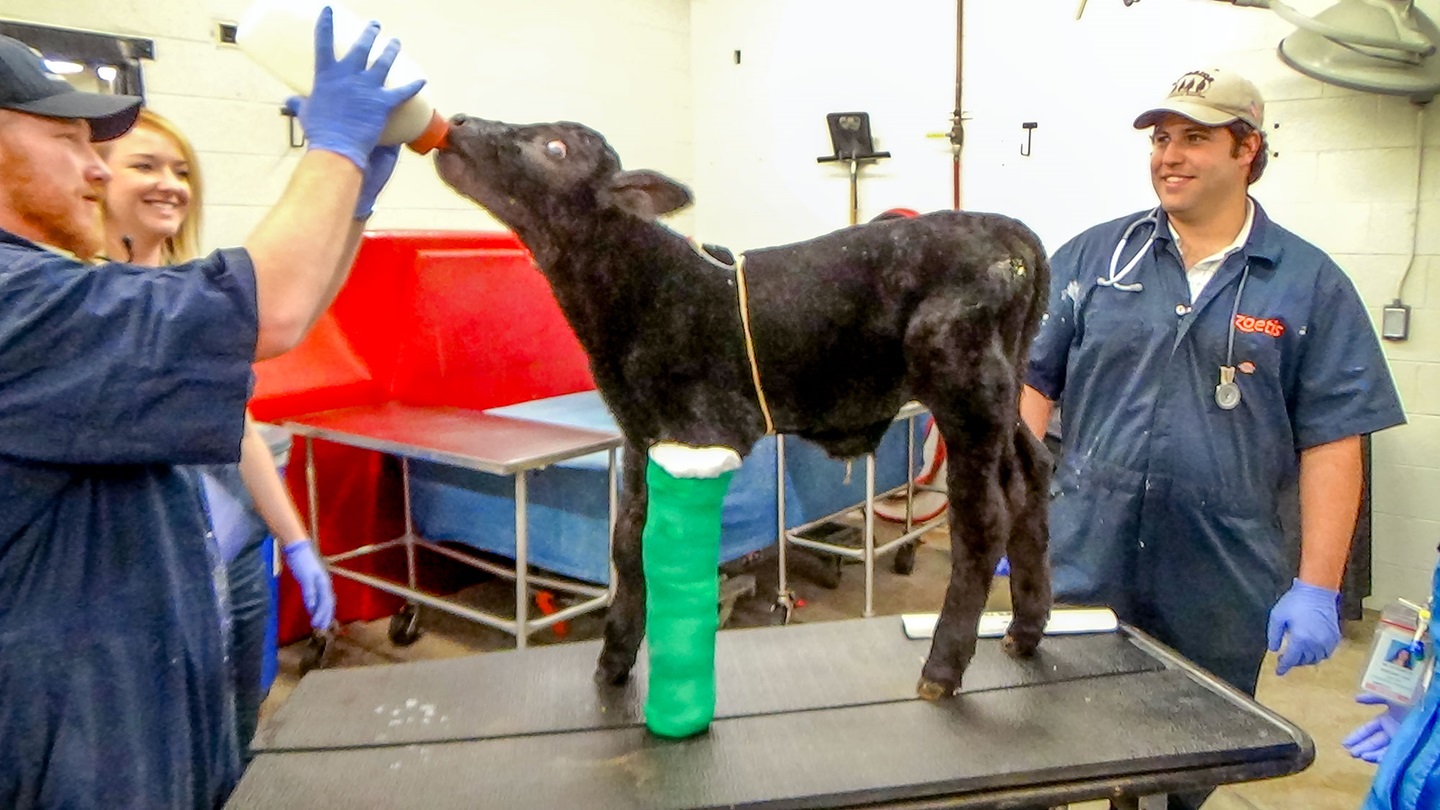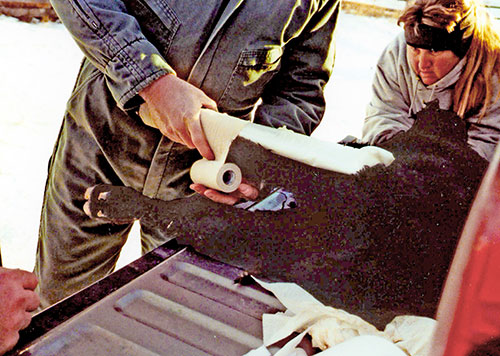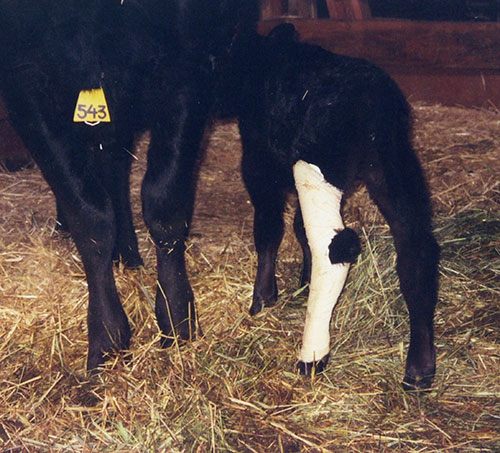Dealing with Broken Bones in Calves
Occasionally cattle suffer fractures, and it’s generally a leg bone. Often it’s a young calf, and the fractured limb can be cast or splinted.
February 23, 2018

Fractures on the upper leg are the most challenging. If it’s above the knee or hock, or above the elbow or stifle, it’s harder to stabilize the above joint (shoulder or hip). “On a hind leg fracture above the stifle, you’d need to immobilize the hip joint and that’s difficult without an elaborate cast or a Thomas splint,” says Bill Lias. [Photo courtesy of Rob Callan.]
Legs are sometimes broken when calves are pulled with improper pressure, says Brandon, S.D., veterinarian Bill Lias of Interstate Vet Clinic. “If we’re not careful when delivering calves during a dystocia, this can be a cause of fracture. Other common causes include being stepped on by the cow or the herd,” he says.
If a predator or dogs upset the cows and they run around, they may step on a newborn or young calf. Sometimes people chasing cattle with a four-wheeler may hit a calf. A newborn calf hidden in the grass may accidentally get run over.
Luckily fractures in young calves heal quickly. The bones are growing fast, so they remodel very effectively, says Lias. On top of that, calves are just generally hardy and stoic; they can withstand the pain issues better than a foal, for instance. This also helps their chance for good recovery.
Location of the fracture is important, however.
“This will dictate how easy or difficult it will be to stabilize the bone. High in the leg is much harder to stabilize than a fracture in the lower leg. You need to immobilize the joint above and the joint below the fracture, and this is easier to do on the lower leg,” says Lias.
The other issue is whether there is an open wound and contamination. The success rate for healing an open wound is lower because of risk for infection in the bone, he explains. It is important to immobilize and protect the fracture before it pokes through the skin.
“I’ve had some open fractures heal, due to toughness of the calf and good care with antibiotics and a good cast or splint. Surprisingly, some of those calves do fine and amaze us on their ability to heal,” he says.
The other positive is cattle aren’t required to be athletes; usually they just need to heal and make market weight, so it doesn’t matter if a leg heals with a blemish. Having the bone perfectly set is not crucial, as long as the leg is functional after it heals so the calf can get around.
There are many ways to stabilize a leg fracture.
“I usually use a fiberglass cast because it’s handy, quick and easy to apply. Many producers repair their own fractures, however, and are very successful,” says Lias. “Something as simple as a good splint and duct tape can work. You can make a splint out of sections of PVC pipe cut lengthwise — cut to fit the calf and secured with duct tape (with padding between the leg and the PVC pipe). Usually three to four weeks of immobilization is adequate time for the bone to heal.”

Location of the fracture is important. “This will dictate how easy or difficult it will be to stabilize the bone. High in the leg is much harder to stabilize than a fracture in the lower leg,” says Lias. [Photo by Heather Smith Thomas.]
Keep the calf and its mother in a small pen where it doesn’t have to travel much. Once the fracture is stabilized, the calf can keep up with mom and is able to get up and down. Keep the pair in a clean, dry place to promote healing and discourage infection.
Fractures on the upper leg are the most challenging. If it’s above the knee or hock, or above the elbow or stifle, it’s harder to stabilize the above joint (shoulder or hip). “On a hind leg fracture above the stifle, you’d need to immobilize the hip joint, and that’s difficult without an elaborate cast or a Thomas splint,” says Lias.
Editor’s Note: Heather Smith Thomas is a freelance writer and cattlewoman from Salmon, Idaho.
February 23, 2018 | Vol. 11 : No. 2

There are many ways to stabilize a leg fracture. “I usually use a fiberglass cast because it’s handy, quick and easy to apply. Many producers repair their own fractures, however, and are very successful,” says Lias. “Something as simple as a good splint and duct tape can work.” [Photo by Heather Smith Thomas.]
Topics: Animal Handling , Health , Management
Publication: Angus Beef Bulletin


